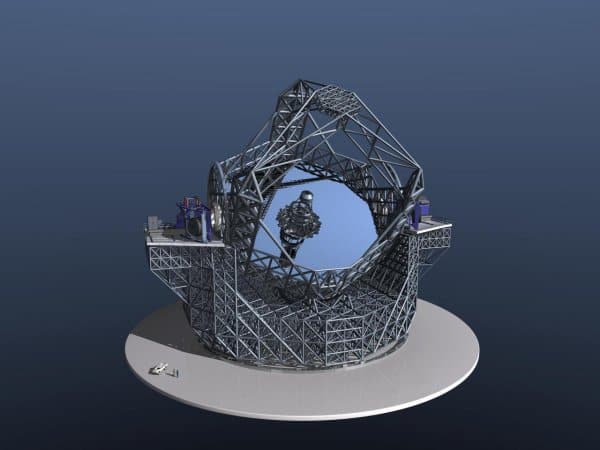
Europe’s funding agencies must increase astronomy spending by 20% in order to construct the next generation of space and ground-based telescopes. That’s the main conclusion of a roadmap published by scientists and funding bodies from 28 European nations as well as the European Space Agency (ESA) and the European Southern Observatory (ESO). The report also makes two ground-based projects — the European Extremely Large Telescope (E-ELT) and the Square Kilometer Array (SKA) — “clear top priorities” for construction within the next 10 years.
The ASTRONET Infrastructure Roadmap: A Strategic Roadmap for European Astronomy, recommends how €2bn of European funds should be spent on astronomy over the next 10–20 years by prioritizing projects due to be built both within Europe and worldwide. The ASTRONET consortium was set up in 2005 as a European version to the US National Research Council’s decadal survey of astronomy and astrophysics.
Of course it is down to governments to decide, but we believe we have a strong argument for the additional funding Michael Bode, ASTRONET Roadmap task leader
The consortium recommends five ground-based projects to be constructed in the next 10 years. The E-ELT costing €800m, and the €1.5bn SKA are among the large ground-based projects that are deemed “high priority” in the roadmap.
Largest optical telescope ever
The E-ELT will be the largest optical telescope ever built with a 42 m mirror consisting of 900 hexagonal segments to study visible and infra-red light. The SKA, to be built in either South Africa or Australia, will be an array of radio telescopes that will search for dark matter and look back to the first 100 million years after the Big Bang to study the evolution of galaxies.
The three other projects considered to be top priority in the roadmap are the Cherenkov Telescope Array to study high-energy gamma rays from black holes, Km3NeT — a 1 km3 neutrino detector in the Mediterranean — and a 4 m-class European Solar Telescope to be built in the Canary Islands.
Among space-based projects, ASTRONET recommended the space-based Laser Interferometer Space Antenna (LISA) project to detect gravitational waves and XEUS — a next-generation X-ray observatory — designed to explore how large black holes influence galaxies.
Mission to a gas giant
Also on the list is one of two missions to study Jupiter or Saturn and their satellites. The LAPLACE mission would study Jupiter and its ice-covered moon Europa, while TANDEM would place a balloon probe in the hazy atmosphere of Saturn’s moon Titan. One of these missions will be selected for launch next year, which it will then compete with XEUS or LISA to be the first to be launched.
To fund all the projects recommended in the roadmap, Europe would have to increase spending on astronomy from €2bn to €2.4bn a year. “Of course it is down to governments to decide, but we believe we have a strong argument for the additional funding,” says Michael Bode task leader for the ASTRONET Roadmap and head of the astrophysics research institute at Liverpool John Moores University in the UK.
Bode also points to the positive effect that astronomy has on science education and the potential spin-offs into the high-tech industry. “The figure [of €2.4bn per year] we estimate includes everything from employees to construction”, Bode told physicsworld.com. “To put it in context, a 20% increase on this represents around 1 euro per citizen in Europe per year”, he added.



